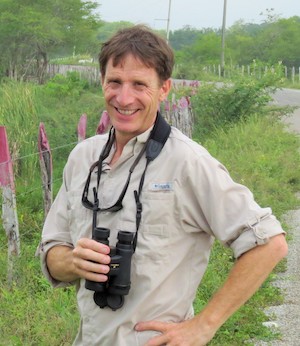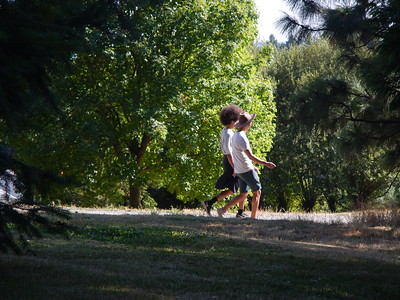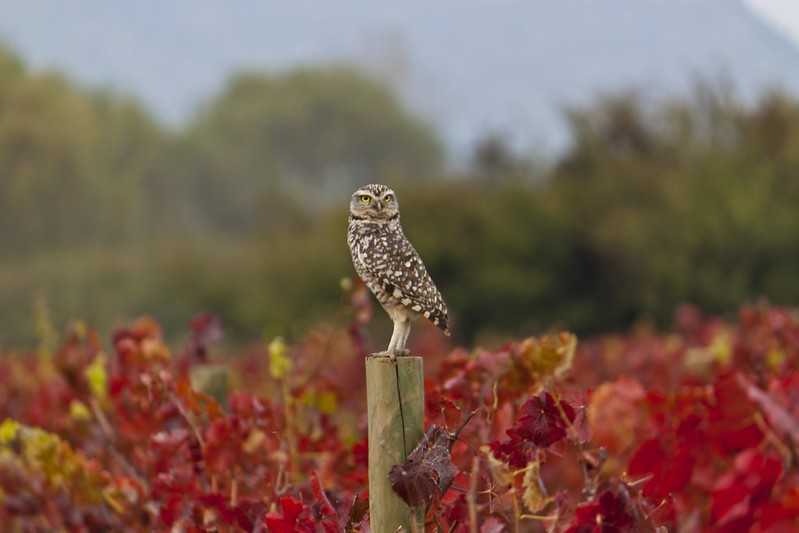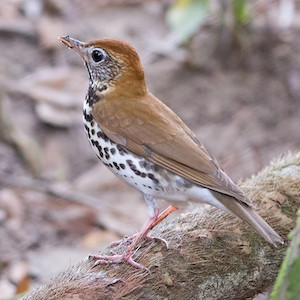A new toolkit document from the North American Bird Conservation Initiative (NABCI) co-authored by Steve Albert, IBP's Assistant Director for Demographic Monitoring Programs, looks at the many instances where what's good for birds is also good for people. We talked with Steve a bit about why even non-birders should care about birds.

Steve Albert, IBP's Assistant Director for Demographic Monitoring Programs. Photo by Oliver Komar.
How did the idea for this document come about?
IBP is a member of NABCI, which is a public-private initiative among federal agencies, the states, and non-profits to develop a unified voice around bird conservation. As part of NABCI’s planning a few years ago, we developed a plan to reach out to partners outside of the bird world. Part of doing that was developing messaging about how bird conservation intersects with other things that are important to people – jobs, human health, clean air, and our food and water supply.
What is the goal of this toolkit?
To show that bird conservation and those things I mentioned can go hand-in-hand. Too often, conservation is viewed as a “lock-up-the-land and restrict all human activity” sort of idea. OK -- sometimes it is that. But often, that view is far from the truth. In the document, my co-author Judith Scarl and I tried to highlight areas where bird conservation professionals can reach out to other groups to discover things we might have in common. Urban planners, farmers and ranchers, medical professionals, hydrologists, economic development people – there are so many groups that we could be working with.

Time spent in nature can improve mood and increase productivity. Photo by SoulRider.22/Flickr.
Did you learn anything that surprised you while researching for this toolkit document?
Can I pick two things? Probably the most surprising thing was in regard to human health. There are a lot of examples about how bird song and other natural sounds and just plain old access to nature can improve your mood, ease depression, and make you more productive at work. (Nearly all of the examples, by the way, are taken from peer-reviewed studies, so there’s solid science behind this.)

Birdwatching is a $40 billion dollar industry in the US. Photo by Don DeBold/Flickr.
Another thing that surprised me was in regard to economics. I suppose by now we all know that bird watching is a big business in the U.S., but I had no idea how big – $40 billion per year! And birding directly and indirectly helps support close to a million jobs. There are some really interesting studies that show that preserving green space (i.e., bird habitat) in neighborhoods increases property values, which raises tax revenue for local communities.
OK, sorry, but I can’t resist a third one: A Swiss ecologist (apparently with way too much time on his hands) calculated that, worldwide, birds consume 500 million tons of insects every year.
How would you like this toolkit to be used?
The main purpose of the document is to be a resource guide so conservation professionals can start a conversation with, well, anybody about common interests and goals. We hope, of course, that it will generate a two-way conversation. We want to proselytize about how awesome birds are, of course, but first and foremost we need to meet people where they live -- listen to what they have to say, and what their priorities are. NABCI has a great series of examples of how this is being done successfully.

Green spaces can increase property values. Photo by Maggie McCain/Flickr.
If you had a skeptical neighbor that said "I don't really like birds, why should I care about conserving them?" What would you say?
That’s cool, not everyone loves birds. But do you like clean air, clean water, and a healthy environment? If you do, we can work together in ways that will help both of us. In fact, I promise I won’t even mention birds if you don’t want me to.
There are so many shared outcomes for birds and people. By providing an environment that is healthy for people, birds will benefit.
If you'd like to read the toolkit document, click the link here: Shared Outcomes for Birds and People: Relevancy Toolkit 2.0 and please feel free to share it!






